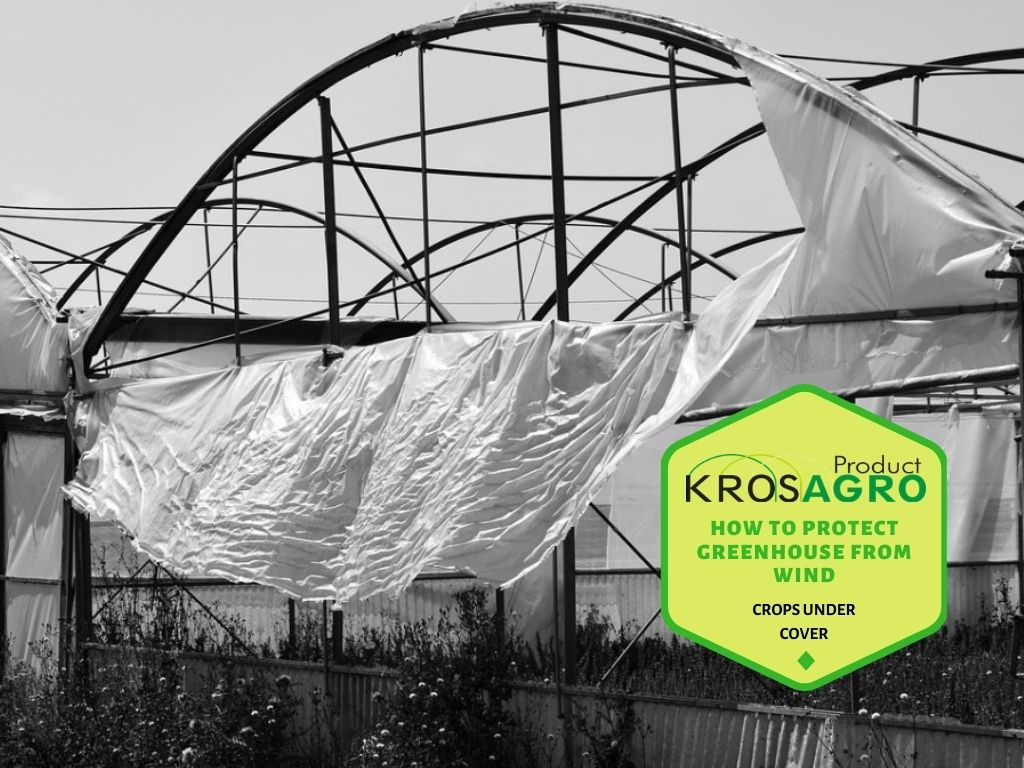Building and maintaining a greenhouse require a lot of work, yet various disasters could still happen; that’s why you have to know how to protect greenhouse from wind.
Don’t you worry, though, here are factors that you should check on how to protect your greenhouse from wind: checking the overall structure, surroundings, doors & vents, glazing splices & bar caps, and glass panels.
These buildings, especially in windy areas, are really vulnerable to strong, gusty winds. Without the proper modification and strengthening, it could wreak havoc to your greenhouse.
No matter the type of greenhouse that you have, the information provided will surely help you prevent any damage that would, potentially, be caused by these natural forces.
Contents
Why Should You Protect Greenhouse From Wind?
Greenhouses are made with expensive materials. Though they are quite pricey, that doesn’t assure the stability of the entire building. In this section, we will elaborate on how wind could significantly affect your greenhouse.
High wind speeds, mainly caused by typhoons and other atmospheric disturbances, are unpredictable and could damage many greenhouses. The destruction would also affect the crops and plants inside the building.
Strengthening and altering the overall structure of the greenhouse for it to be windproof is a must. Doing so would provide security towards your hard-earned food supply and crop planting. It could also save you a lot of money because of the minimal to zero damage exhibited after following all of the tips provided below.
How To Protect Greenhouse From Wind
Protecting your greenhouse is easy to do and highly efficient. Let’s explore the procedures on how to protect greenhouse from wind below. Here are the things that you should follow to secure your infrastructure:
#1 Checking the structure
Greenhouses are vast and well-known for their complex systems. In order to maximize its tolerance towards heavy winds. The structure of the building should be stable enough so that it won’t be blown away or even be moved easily.
Ensure that the building is square and level on all sides. If the greenhouse frames aren’t positioned evenly and correctly. The glass panels would also become uneven and make way for air gaps to destroy the building.
Make sure to check all structural joints and to brace. Tightly secure bolts and cable turnbuckles to ensure the stability of the entire infrastructure. Most of these materials could loosen over time, so it’s a must to investigate them regularly.
If available, use windbreaks to deflect the wind or reduce the wind speed. Conifer trees and plastic/wood fences could be used to deter these vital forces.
#2 Checking the surroundings
Greenhouses are usually located outdoors. Heavy winds could bring about materials that could potentially put the building at risks like stones, boxes, plywood, and heavy branches.
Regularly check the greenhouse surroundings to see if heavy winds could carry any loose objects. Tie-down or put away other materials in your gardens such as children’s toys, plant pots, garden furniture, and tools.
#3 Ensuring the doors and vents
Your plants need air too. Winds, however, could destroy them and the building that they are in.
If strong winds are within your area anytime soon, tightly close your greenhouse’s vents and doors. Leaving these areas unclosed would double the air pressure and would destroy the panels and roof if the openings are left unattended.
Make sure that rubber glazing strips and sealants around your doors and vents are tightly secured and appropriately placed further to improve your building’s tolerance to heavy winds.
#4 Checking glazing splices and bar caps
The panes around the greenhouse are expensive and could be demolished quickly if not secured well. Winds can creep up between the tiniest gaps within the frame and the panes.
To secure the panes, make sure to use and tightly secure bar caps if available for your greenhouse model. If not, you should use glazing repair tape or silicone sealant, inside and outside of your greenhouse panes, to address your building’s weak points.
Also, securely bolt and tighten screws to further ensure the stability of your building.
#5 Checking glass panels or panes
Glass panes are prominent in greenhouses and provide a transparent environment that is good for letting sunlight in.
In order to guarantee its tolerance to high-speed winds, the Glass itself should be checked every once in a while. Glass becomes brittle and can be easily destroyed as time goes by. Immediately replace cracked or damaged panels to minimize the potential risks. Always wear protective equipment when doing so.
Ask yourself what material you would use for the panels around your greenhouse. The panels should be strong and durable while fitting just right for your budget.
#6 Must-have supplies
Tragedies caused by natural factors could happen at any time. It is vital for you always to be ready and have materials in hand to respond to any damages to your greenhouse immediately. Here is a list of must-have supplies that you should have:
- Duct tape for broken panels plastic; fasteners and plywood for securing vents and doors
- Repair tape and covering as a substitute for heavily damaged parts
Conclusion
You should be ready at any time. Protecting your greenhouse from wind is always efficient and secures your budget. Following all of the elaborated guides on how to protect greenhouse from wind would make you a better and confident greenhouse enthusiast.
